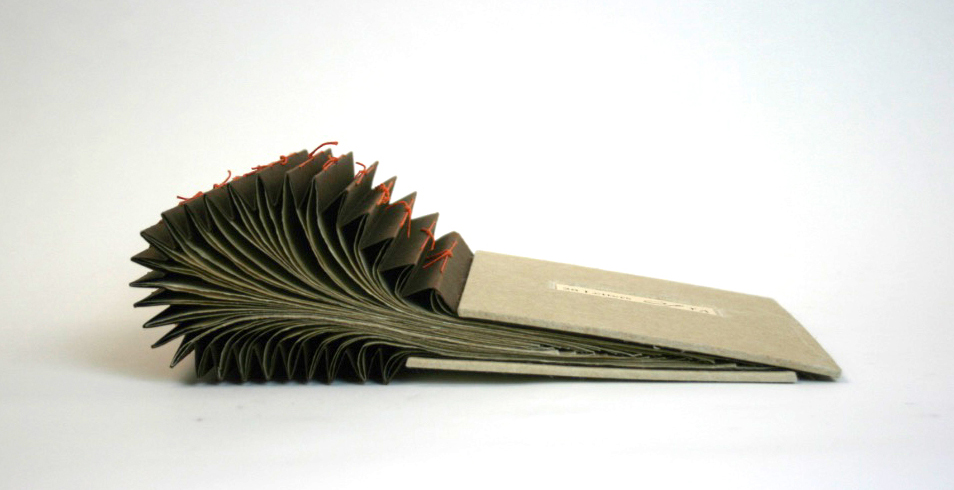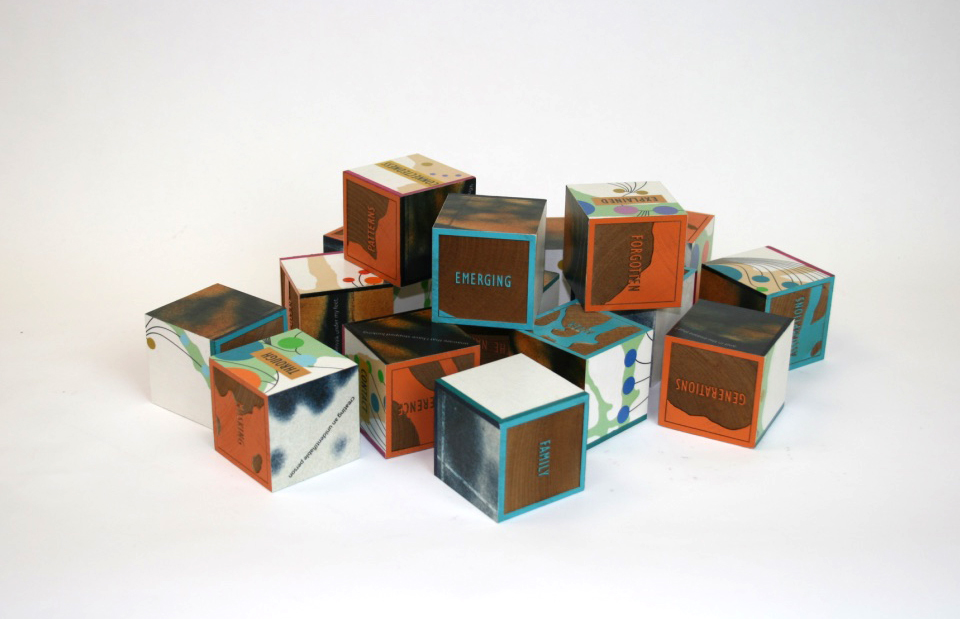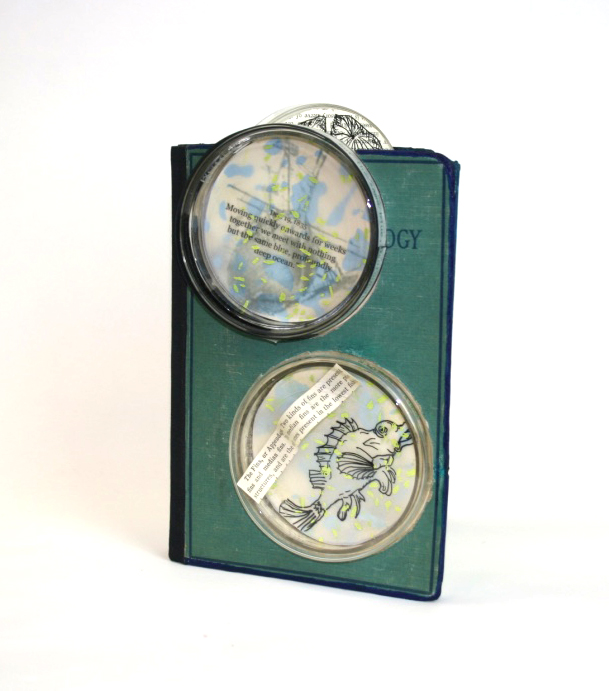Taken from the Walter Havighurst Special Collections blog. Written by exhibit curator Ashley Jones.
28 Letters by Islam Aly
The fall exhibit in Special Collections, Creative Codex: Books as Art in the Walter Havighurst Special Collections, was created to harmonize with Miami University's year of Creativity and Innovation. As the Preservation Librarian, I have spent countless hours assisting the curators of Special Collections with preparations for their exhibits. When the year of Creativity and Innovation was announced, I jumped at the chance to not only curate my very first exhibit, but to curate an exhibit on one of my favorite holdings in Special Collections - Artists' books.
Crucial Perimeter 1, by Islam Aly
So what, exactly, is an artist's book? The definition itself is usually up for some debate. I've seen artist's book defined as “a work of art that utilizes the form of a book,” however there are plenty of examples in the exhibit that seem to contradict this definition such as Lee Krist's How to Transition on Sixty-Three Cents a Day, or Family Tree by Julie Chen. The Smithsonian Library defines an artist's book as “a medium of artistic expression that uses the form or function of “book” as inspiration,” and further claims it is the artist's intent that truly defines an artist's book. Regardless of a concrete definition, most artist's books are created to make art that is interactive, portable, and easily shared.
Family Tree by Julie Chen
One of the unique challenges of this exhibit was in figuring out how to display these works of art. Even traditional books can be difficult to display, as they are meant to be read, and the pages turned. Artists' books took this challenge to a whole new level. Unlike traditional works of art, such as paintings, drawings, and even statues, artists' books are truly made to be handled by the viewer. In fact, many of the books rely on the viewer's interaction in order to meet their full potential. Artists' books are certainly not made to be locked up behind glass and viewed statically from the other side. In order to reconcile the interactive nature of artists' books with the static nature of exhibits, I examined each book for the most dynamic position for viewing. In the majority of cases, that meant the book was to be fully opened and extended, with as much of the structure and content visible as possible.
An Exquisite Future by Corcoran School of the Arts & Design
Once I had all the books chosen our Curator of Special Collections, Carly Sentieri, assisted me with the basic layout of the exhibit cases. The next step was to create custom cradles and supports. Creating the cradles for artists' books was a little different than I was used to. Hardly any of the books in the exhibit open in the traditional fashion of a codex. Coupled with my determination to display the books as dynamically as possible, my challenge was to create supports that would allow for the visual I wanted, but with the support that was needed. Many of these books are unique or very limited run, handmade items. The last thing I wanted to do was irreparably damage these beautiful objects in the pursuit of showing them off.
XX by Carrie Ann Plank
For the majority of the book supports I used sheets of PETG, a transparent, thermoplastic material that can be bent and formed by hand. The PETG sheets created a rigid structure that the book could be strapped to, creating a support that both cradled the book and held it in place.
Darwin at Sea by Diane Stemper
Creative Codex: Books as Art in the Walter Havighurst Special Collections is currently exhibited in the Walter Havighurst Special Collections (King Library, room 321), and will remain on display until the beginning of December. An opening reception for the exhibit, featuring guest speaker and local book artist Diane Stemper, will take place on Thursday October 22, from 4-6pm in King Library room 320.
Ashley Jones
Preservation Librarian






